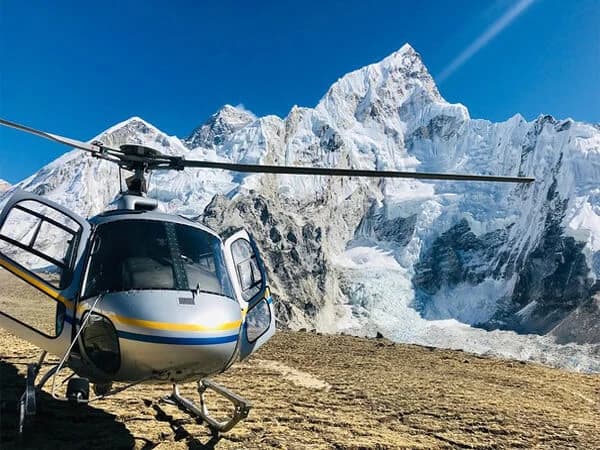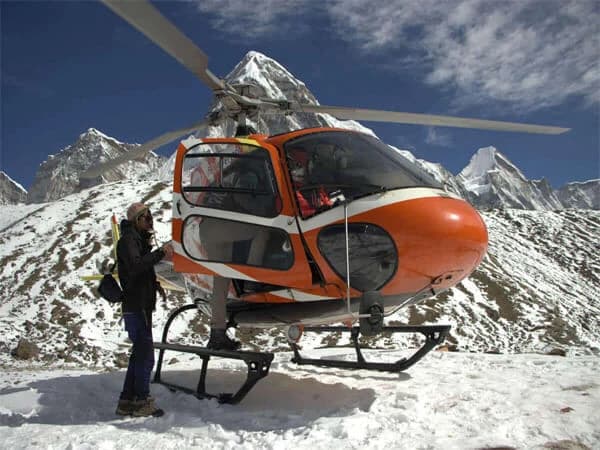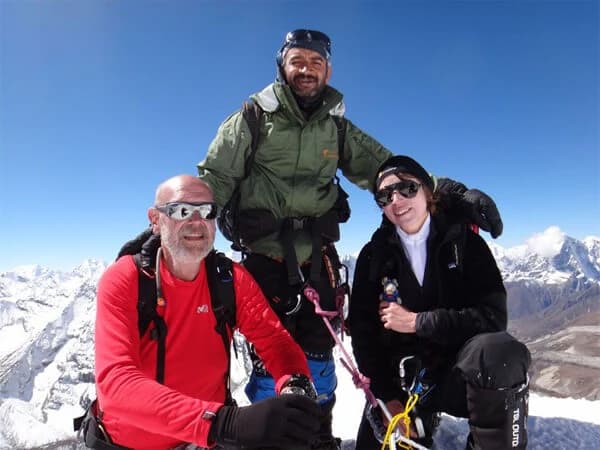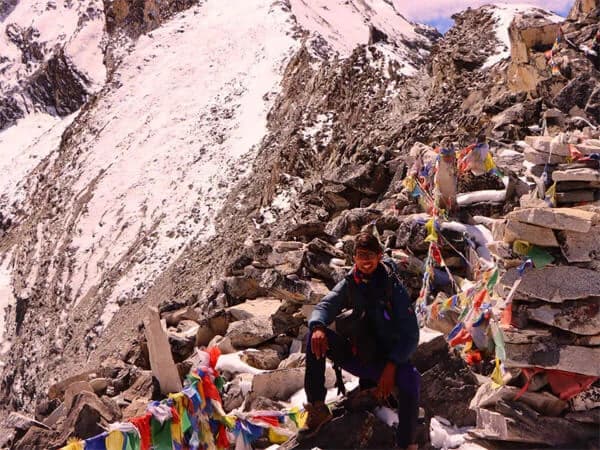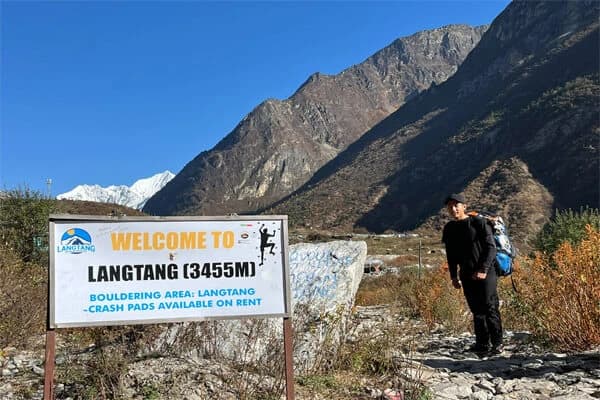Nepal Wilderness Trekking is a unique way to discover the unexplored and lesser-traveled regions of the Himalayas. In contrast to well-known trekking routes like the Annapurna Circuit and Everest Base Camp, wilderness treks take visitors far into isolated areas where the environment is unspoiled. Here the local culture is unaffected by modernization and tourism. For those seeking adventure, tranquility, and a genuine connection to the mountains, these treks are ideal.
The trek feels more like an exploration in wilderness, where the trails are peaceful and the scenery is wild. You might go through dense forests, remote valleys, historic towns, and high mountain passes that are rarely visited. There is only pure nature and a genuine sense of discovery—no bustling tea houses or large crowds.
There are plenty of off-the-beaten-path treks in Nepal that let you deeply and meaningfully appreciate the natural beauty and cultural diversity of the nation. These treks bring you closer to the heart of Nepal, whether it is through wildlife sightings, alpine meadow walks, or encountering friendly people in isolated villages. Nepal wilderness trekking is the ideal option for trekkers looking for a more unique and tranquil way to view the hidden side of the Himalayas.
Remote Trekking in Nepal
Remote Trekking Routes in Nepal refers to trekking through regions that are far from roads, cities, and well-travelled tourist routes. These treks take you far into the highlands, where people's ways of existence have not been changed by modernity. The routes are peaceful, the air is clean, and the residents in these isolated areas continue to lead modest, traditional lives. Away from the crowded trekking routes like Everest or Annapurna, it is a fantastic chance to experience the true Nepal.
Remote locations like Dolpo, Kanchenjunga, Humla, and Makalu are home to some of Nepal's most stunning and unexplored trekking destinations. Upper Dolpo Trek, Kanchenjunga Base Camp trek, Limi Valley Trek, Makalu Base Camp Treks etc, are some of the remote treks where you can discover the hidden gems of Nepal. These areas are rich in natural beauty, with serene villages, tall peaks, and beautiful valleys. Fewer people visit them because they are difficult to get to, which makes the experience feel more personal and special.
In Nepal, trekking in remote areas is more difficult. The lodgings are simple and frequently require camping, and the trails can be difficult. Pure nature, distinctive cultures, and breathtaking landscapes that few have seen are the great rewards, though. Additionally, these treks support the little villages that do not profit from mass tourism like other popular treks. Remote trekking in Nepal is the ideal method to capture the essence of the Himalayas if you are searching for a peaceful adventure and a close relationship with the natural world.
Off-the-beaten-Path Trails

Untouched trekking destination Nepal are ideal for trekkers who like to discover serene places away from the crowded tourist routes. These routes lead you to isolated locations where the local way of life is still traditional and the environment is unspoiled. These undiscovered paths are less crowded route than well-known treks like Everest Base Camp or Annapurna Base Camp, providing a more intimate and tranquil experience.
Trekking to off-the-beaten-path trails may result in fewer trekkers passing by. Small towns, wild forests, and less-traveled mountain trails will all be discovered. You can learn about their culture, cuisine, and way of life in a respectful and natural way from the friendly locals.
The Khopra Danda Trek, the Tsum Valley Trek, and the Ruby Valley Trek are a few instances of these pathways. These treks provide serene walks, breathtaking mountain views, and an intense sense of adventure. Guides are strongly advised for these treks because the routes are not always clearly defined.
Wilderness Trails in the Himalayas
Away from the crowded tourist routes, Wilderness Trails in the Himalayas provide a tranquil and unspoiled trekking experience. These paths lead you far into the mountains, where the landscape is wild, breathtaking, and wild. You can cross swift-moving rivers, go through peaceful forests, and ascend high mountains that provide breathtaking vistas of snow-capped peaks. It feels like a journey into a secret universe with each step.
Wilderness paths are less developed than popular trek. There aren't as many teahouses, and camping is occasionally required. The sense of being near nature is enhanced by this trek. Rare animals like blue sheep, Himalayan tahr, and, if you're lucky, snow leopards, may be seen along the routes. The sky is clear, the air is clean, and there is a profound silence.
The "Dhaulagiri Circuit, Limi Valley Trek, and Upper Dolpo Trek" are wonderful examples of Himalayan wilderness pathways. These routes offer a unique experience, but they do require careful planning and perhaps a specific authorization.
Trekkers who enjoy the outdoors, tranquility, and genuine adventure will find that the Himalayan wilderness paths provide an amazing experience through some of the most stunning and unspoiled regions on earth.
Secluded Trekking Routes
Secluded Trekking Routes in Nepal are perfect for trekkers who like to experience nature in solitude, away from crowded paths and tourists. These paths lead through serene villages, calm jungles, and secluded valleys where you can walk for hours without encountering many people. The journey is more private and soothing because of the peace and quiet along these roads.
Numerous stunning secluded trekking routes may be found in Nepal, including the Guerrilla Trek, the Red Panda Trail, and the Ruby Valley Trek. Though less well-known than Everest or Annapurna, these treks are equally beautiful. In addition to seeing snow-capped peaks, waterfalls, and green landscapes, you will get the opportunity to visit villages where locals remain living traditional lives.
You might camp or stay in simple teahouses along these less-traveled paths. The paths might be challenging to follow, so you'll need a guide who is familiar with the area. Walking through nature without any interruptions and experiencing a sense of connection to the land is part of the journey. Secluded trekking trails in Nepal provide the ideal opportunity for visitors seeking a serene and quiet experience of the mountains in their most pure state.
Pure Nature Trekking

The main goal of Pure Nature Trekking is to travel through unspoiled areas away from crowded streets, large cities, and loud crowds. It gives a sense of connection to nature while surrounded by mountains, rivers, woods, and the sky. Numerous stunning treks in Nepal provide this serene and revitalising experience. These treks lead you into areas with untamed landscapes, clean air, and only the sounds of birds, wind, and running water.
An example of pure nature trekking is the Kanchenjunga Base Camp Trek. You may walk through dense forests and high meadows with few people around on this trail, which leads deep into the eastern Himalayas. The Makalu Base Camp Trek, renowned for its secluded beauty, rare vegetation, and mountain views, is an another excellent choice. For those who enjoy animals, the Upper Dolpo Trek passes through Shey Phoksundo National Park, where Himalayan marmots and blue sheep may be seen.
Enjoying the journey through nature is more important than just getting to your objective on these treks. For those who like to unwind, take in the fresh air, and explore Nepal's untamed side, pure nature trekking is ideal. It is a serene yet effective approach to take in the Himalayas.
Unexplored Nepal Treks
Unexplored Nepal Treks introduce you to locations that are unfamiliar to most tourists. These trekking routes are tucked away in remote areas of the Himalayas, where the scenery is unspoiled and the paths are peaceful. These walks are ideal if you want to explore Nepal from a fresh perspective, away from the tourists.
The Tsum Valley Trek in Manaslu region serves as an example. There are many old monasteries, stunning scenery, and good-hearted people in this holy valley, which has a rich history in Tibetan culture. The Saipal Himal Trek in far-western Nepal is an excellent alternative. It is secluded, untamed, and abundant with woods, alpine lakes, and tranquil mountain communities. Another great uncharted trails are the Ganesh Himal Base Camp Trek and Ruby Valley Trek. These travel via terraced slopes, waterfalls, and traditional Tamang and Gurung settlements. They offer unusual adventure that provides a unique opportunity to experience animals and isolated highlands.
The encounter feels new and authentic because these routes are not yet well-traveled. You will get to know locals who appreciate nature in its most pristine state and don't frequently see tourists. Trekking across uncharted Nepal gives you the impression that you are a real trekker, following routes that haven't been travelled by many.
Less-Crowded Himalayan Journeys
Less-Crowded Himalayan Journeys are ideal for trekkers who like the beauty of the mountains without the noise and congestion of popular routes. Numerous serene and lovely trekking routes in Nepal provide breathtaking vistas, a vibrant culture, and an authentic sense of adventure. For those who prefer peaceful routes and deeper ties with the natural world and local culture, these treks are perfect.
The Kanchenjunga Base Camp Trek in eastern Nepal is a good example. It travels through isolated communities and forests before arriving at the foot of the third-highest mountain in the world. The Upper Dolpo Trek, which provides views of deep valleys, historic monasteries, and vibrant landscapes, is another serene choice. The Tsum Valley Trek, renowned for its serene paths and vibrant Tibetan culture, can also be enjoyable to you.
Another undiscovered treasure is the Ruby Valley Trek, which is situated between the Langtang and Manaslu region. Trekkers seeking stunning vistas and unspoiled communities would love it. Even though there aren't many luxury lodges on these less-crowded Himalayan trips, they provide something unique: solitude, room, and genuine connection.
Walking at your own pace, enjoying in the serene path, and having a more personal and meaningful experience of the Himalayas are all benefits of a less-crowded trek.
For trekkers who desire to feel free and a part of nature, Wilderness adventure in Nepal is a dream come true. It is a true experience where you overcome obstacles, breathe in the solitude, and find stunning locations that most people have never seen. It's more than merely walking along mountain trails.
These treks frequently take place distant from roads and cities. No large hotels, no crowds, and occasionally even no phone signal are present. Large open spaces, untamed rivers, serene forests, and seemingly endless snow-capped summits are what you do discover.
The Upper Dolpo Trek is one popular wilderness adventure example. This is one of the most isolated walks of Nepal. It crosses the high mountain passes, through arid valleys, and old Tibetan-style settlements. You might spot yaks, blue sheep, and, if you're lucky, a snow leopard along the route.
The Makalu Base Camp Trek is another excellent example. It leads you to the base of Mount Makalu, the world's fifth-highest peak. It is a peaceful, difficult trek with glaciers, less-visited woodlands, and breathtaking views.
Those who appreciate solitude, pure nature, and genuine adventure should consider such trips. Nepal's wilderness adventure offers you the opportunity to experience true wilderness life if you are searching for something more than just sightseeing.
There are many hidden valleys and forests in Nepal that are just waiting to be explored. These locations are frequently unspoiled by modern life. They represent hidden regions where traditional life and the natural environment coexist harmoniously. These secret locations are ideal for trekkers who are curious and enjoy the outdoors.
The Annapurna region's Nar Phu Valley is one such location. For many years, this valley was beyond limits to outsiders. Few trekkers still go there. Narrow canyons, dense forests, and stone-built towns where people live much like they did hundreds of years ago are all along the trail.
The Barun Valley, located in the Makalu region, is another undiscovered treasure. Rare flora, birds, and animals can be found in this area, which is rich in biodiversity. This area has dense, verdant, and vibrant forests. The sounds of nature fill the air as waterfalls cascade down sheer cliffs. Eventually, the trail leads to glaciers and high alpine meadows.
In the Manaslu region, you can also explore the Tsum Valley. This serene valley is well-known for its dense forests covered in prayer flags, sacred caves, and Buddhist culture. It is a unique location where nature and spirituality coome together.
Entering these secret valleys and forests is like entering a storybook. The experience is serene and enchanted, and the beauty remains unaltered. An authentic Himalayan experience is the best method to discover the true Nepal. Meeting locals, getting to know their way of life, and knowing the centuries-old culture that has lived in the Himalayas are all important aspects of this type of journey.

The authentic Himalayan experience begins after leaving the crowded tourist areas and into villages where people still cultivate, weave, and live in traditional stone homes. Here, you might be asked to join in a tiny village celebration, share a meal, or sip on traditional tea.
The Lower Dolpo Trek with Tibetan-style culture, is among the greatest locations. You will see Monasteries, prayer walls, and people dressed traditionally. Here, life is simple but meaningful.
You can also have a rich cultural experience on the Khopra Danda Trek in the Annapurna region. Compared to neighboring trails, it receives fewer visitors and offers homestays, which allow you to stay with local families and gain insight into their daily routines.
By selecting these routes, you get a true taste of mountain life and help out local communities. Trekkers frequently recall the warm greetings, customs, and smiles the most.
An authentic Himalayan experience is heartfelt, strong, and serene. It is about connecting with the people who live in the mountains as well as with the mountains themselves.
Wilderness Base Camp Treks
Wilderness base camp treks are ideal for individuals seeking the excitement of climbing to the base of a massive mountain without crowds of people on popular paths. These treks take you through more peaceful, isolated locations to the base camps of high summits. The experience feels more personal, and the vistas are equally breathtaking.
The Kanchenjunga Base Camp Trek is a good example. The third-highest peak in the world, Kanchenjunga, receives relatively few visitors for its base camp trek. The trail winds through expansive alpine valleys, quiet settlements, and dense forests. It is like traveling to a planet that has been forgotten.
The North Annapurna Base Camp Trek is an alternative that is far less well-known than the traditional ABC route. It is untamed, stunning, and in certain places, camping is necessary. Amazing vistas and the genuine quiet of the Himalayas will be your reward.
For trekkers seeking something unique, these wilderness base camp treks provide adventure, tranquility, and breathtaking scenery. Trekking in pristine landscapes includes areas that have not yet been impacted by tourists and are still unspoiled. The rivers are pure, the trees are vibrant with color and sound, and the air is clean. Everything seems alive and at harmony. The Api Saipal Trek in western Nepal is a stunning example. This area is renowned for its unspoiled landscape, which includes green valleys, turquoise lakes, and snow-capped summits. The trail is kept pristine and clean since it is so remote from populated areas.
The Upper Mustang area is another excellent location, where you may stroll amid cliffs of various colors, secret caves and desert-like scenery. Mustang's natural beauty is still wild and well-protected despite its rich cultural heritage.
These pristine landscapes serve as a reminder of how lovely the unspoiled earth may be. Trekking through them is like receiving a gift, and it motivates people to contribute to the preservation of these unique locations.
Some of the most sincere and hospitable people in the Himalayas can be found in the remote villages of Nepal. In these villages, people lead humble lives. Humans coexist peacefully with the environment, raise their own food, and herd animals. You get a unique glimpse of a way of life that hasn't altered much throughout the years when you go there.
Great examples are villages in the Far West, including those in the Humla or Dolpo regions. Roads and internet are lacking in many of these locations. They can only be reached on foot. However, you are greeted like family once you get there. Remote villages like Sama Gaun in the Manaslu region provide breathtaking views and a vibrant Tibetan culture. You can be asked to attend a local ritual or have butter tea in someone's home. Travelling deeper into the heart of the Himalayas can be accomplished by trekking through remote villages of Nepal.
High-altitude wilderness routes offer the difficulty and beauty that only the high mountains can provide if you are searching for true adventure. These treks cross mountain passes higher than 5,000 meters and lead you through breathtaking scenery that includes snow, glaciers, and boundless skies.
The Larkya La Pass in Manaslu Circuit Trek is an additional thrilling choice. Trekkers are rewarded with expansive vistas of the mountains and a genuine sense of remoteness at 5,160 meters.
Far above the bustling world below, these high-altitude wilderness routes offer a profound connection to nature, but they also demand good fitness and preparation.
Untouched Nepal Trekking
The goal of Untouched Nepal Trekking is to discover the raw natural side of the nation, the area that yet feels untamed, spiritual, and unrestricted. The bustle of tourist attractions and the noise of crowds are absent from these treks. Rather, they provide space, quiet, and a very tangible experience.
These memories remain forever, whether you're sleeping in a tent beneath the stars, walking by yourself beneath tall pines, or listening to the wind at the top a high pass.
Nepal's unspoiled beauty may be seen on treks like the Red Panda Trail, Rolwaling Valley, and Tsum Valley. They serve as a reminder that sometimes the quietest travels are the most rewarding.
After all, untouched Nepal trekking is more than simply an adventure. It is a means to respect local culture, establish a connection with environment, and come home with a clear head and a full heart.
Some of Frequently Asked Question
What is wilderness trekking in Nepal?
Trekking in isolated, less-visited regions of Nepal where the environment is unspoiled and there are few or no tourists is known as wilderness trekking. These treks take you deep into the wild Himalayas and away from crowded trekking routes.
Is trekking in the wilderness safe?
Yes, if you are prepared and follow a certified guide, it can be safe. Due to their remote location, these treks require careful planning, high-quality equipment, and an experienced local guide.
Does wilderness trekking require a guide?
Indeed, for safety, it is strongly advised to have a guide. They know how to handle challenging treks and high altitude, and they assist with emergencies, language, and navigation.
What time of year is best for trekking in Nepal's wilderness?
The ideal seasons are spring (March to May) and fall (September to November). The trails are dry, the weather is fine, and the vistas of the mountains are breathtaking.
Do these treks require Trekking permits?
Yes, special permissions are needed for the majority of wilderness trips. You must apply through a recognised trekking organisation for some, as they are located in restricted areas such as Upper Dolpo or Kanchenjunga.
What should I bring for a trek in the wilderness?
Pack a sleeping bag, a first aid kit, a water purifier, snacks, a headlamp, warm clothing, sturdy trekking boots, and a sleeping bag. Your guide or porter may bring food and tents because some places lack stores or lodging.
How fit should I be?
Generally speaking, wilderness treks are more difficult than popular ones. You should be able to walk five to seven hours a day at high elevations, and be in good physical condition. It is a good idea to train before your trek.
Which Nepali wilderness treks are the most well-liked?
Kanchenjunga Base Camp Trek, Upper Dolpo Trek, Makalu Base Camp Trek, Dhaulagiri Circuit Trek, and the North Annapurna Base Camp trek are a few excellent wilderness treks.
Will there be accommodations for dining and sleeping?
You can stay in simple tea houses or homestays for some treks. However, you might have to camp and pack your own food in more isolated locations. This is something that our trekking company will take care of.
What makes a wilderness trek better than a popular one?
Wilderness trekking is ideal if you are looking for adventure, tranquility, and a closer bond with the natural world and culture. You get to visit parts of Nepal that few people ever see, and it is difficult but incredibly rewarding.
Conclusion: Nepal Wilderness Trekking
Nepal's wilderness treks offer something genuinely unique: serene paths, unspoiled wildlife, and profound cultural moments. You develop a deep connection with nature and yourself as you walk through isolated forests, high mountain passes, and hidden valleys. For those seeking genuine adventure and unspoiled beauty, these treks are ideal. But it is important to choose a reputable trekking company because these regions are remote and underdeveloped.
For trekking in the wilderness, our agency Nepal Trekking Routes is a fantastic option. They provide knowledgeable guides who keep you comfortable and safe, and they are well-versed on the hidden routes. Your trek benefits the places you visit because we help local communities and preserve the environment. You can have a wonderful, simple, and pure outdoors experience. The wilderness of Nepal awaits you if you are prepared to escape into the Himalayas.





